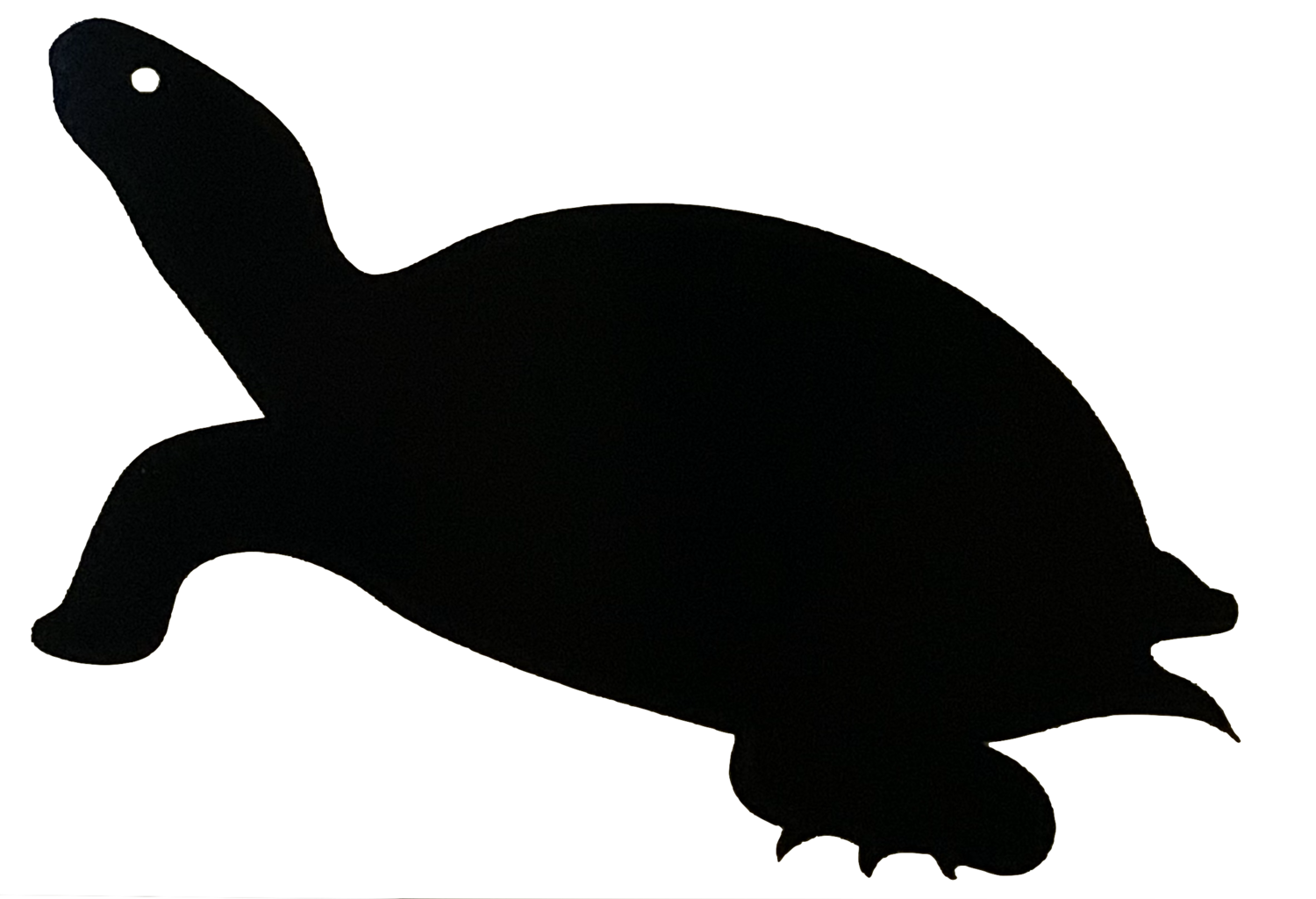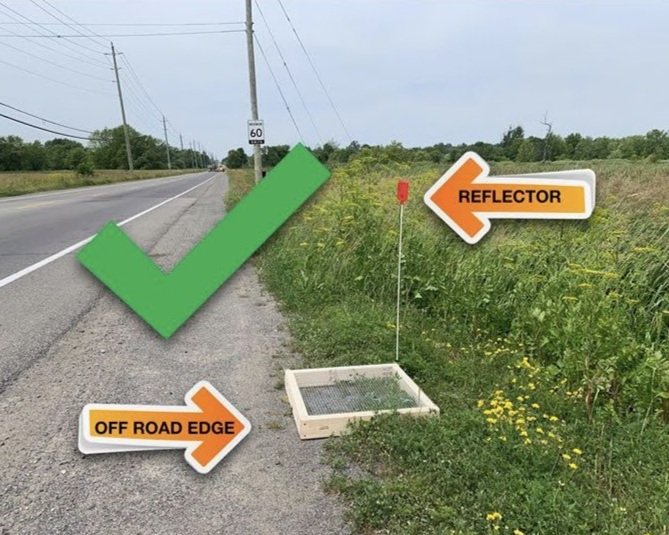Protecting Turtle Nests on Public Land
Did you know that Turtles Kingston relies on the public’s participation to respond to the needs of the nesting turtles they encounter. That means we rely on YOU!
Look out for nests and buy or build your own nest protector to help prevent predation of turtle eggs. We recommend that turtle nests be covered with a ‘Turtle Nest Protector’ as soon as possible. Predation of turtle nests is most common within the first 48 hours after being laid. When the female lays her eggs, she releases her bodily fluids to moisten the eggs before burying them. That liquid has a powerful scent that reveals the nest location to the predators. The smell does dissipate after a few days, especially after a rain, which is why predation happens within the first few hours to 48 hours. However, research has shown that predation continues throughout the entire incubation period as it has been observed that the turtles ‘talk’ by making clicking sounds that can be heard by the predators. They are particularly ‘chatty’ just prior to emerging from the nest which is why it is recommended to leave the Nest Protector on for the entire incubation period.
Less than 1% of all turtle eggs survive to sexual maturity, mostly because of predation.
If/when you come across a nest that is on public property, the installation of the protector requires the permission of the landowner. In the City of Kingston area, many of the inquiries about installing nest protectors on public land come under the jurisdiction of the Public Works Department of the City of Kingston. We have established a protocol with the City that respects the protocol established by the Ministry of Natural Resources and Forestry (MNRF). You can encourage your community to follow suit using the City of Kingston as an example and reference.
This is Turtles Kingston’s public land nest protection protocol within the City of Kingston:
Nest protectors can be placed behind the guardrail to avoid the pull off section of the road
Nest protectors can be placed on the roadside at the edge of the shoulder in the grassy area, no more than 75 mm onto the gravel of the road shoulder
Nest protectors cannot be placed entirely on the gravel of the roadside as this must be kept clear for motorists as a safety pull off zone
Nest protectors on roadsides must have a reflective laneway marker to indicate their location
Use an approved nest protector design (such as that suggested by Turtles Kingston which is based off the Canadian Wildlife Federation design)
All nest protectors must have openings that allow hatchlings to exit on their own
You must include a label that identified the nest protector and provides your contact information. This label should be made waterproof some how (e.g. within a ziptop bag or tag)
Email a photo of the nest protector with a detailed description of the location to the Public Works Department of the City of Kingston
We recommend you check the nest protectors on a regular basis to ensure it has not been vandalized or moved and also to check for emerging hatchlings which may need your assistance to get to their water source once hatched. If there is no evidence that the turtles have exited by the end of September, it may be a species like the Midland Painted Turtle or the Northern Map Turtle that commonly overwinter in the nest. That is, the turtle will hatch and leave its shell casing but will remain underground in the nest cavity till the following spring.
Be aware that these instructions apply for placing nest protectors in the City of Kingston as we have worked with the City to create this procedure. If you live outside Kingston you can work with your area to develop a similar procedure.



